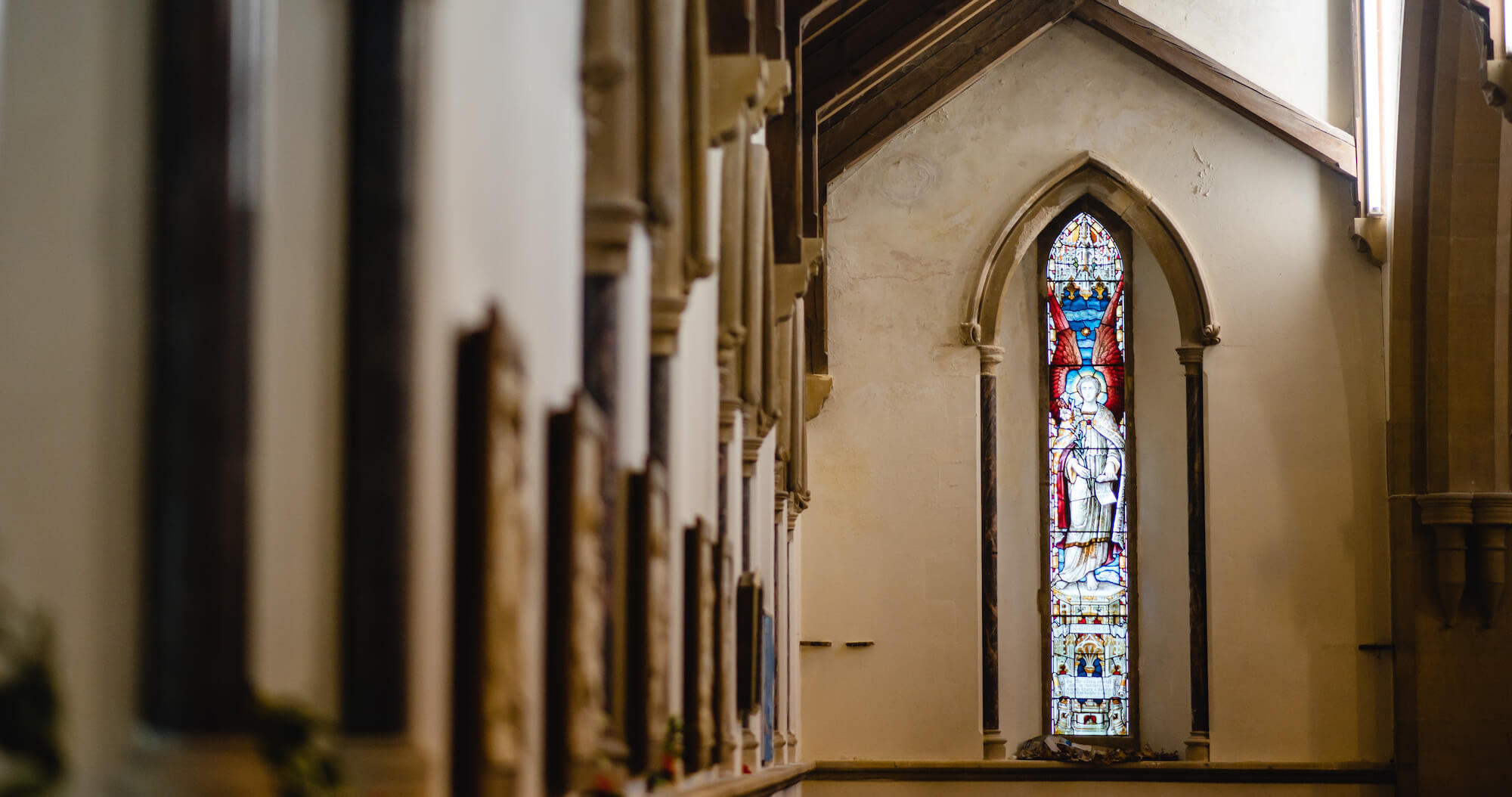The Parish of St Katharine with St Nicholas…
The Parish has two churches, some 0.6 miles apart – St Katharine’s, Southbourne and St Nicholas, Southbourne-on-Sea.
The Parish is bounded in the south by the beautiful sandy beaches of Poole Bay and to the north, the banks of the River Stour, a popular location for pleasure craft to moor. Throughout the year visitors seek refreshment and relaxation within an inspirational and stimulating environment.
Our church family is drawn from all walks of life, with worshippers of all ages who are keen to develop their faith and knowledge of Scripture.
Both of our churches are members of Churches Together in Southbourne.
St Katharine's, Southbourne - History
Worship at St Katharine’s is of the Anglo Catholic Tradition, including the use of vestments, bells, incense and ably supported by a robed choir.
St Katharine’s Church was founded by personal friends of John Keble to exhibit and strengthen the Anglican Catholic aspect of the Church of England. In 1876 a temporary church was built in a very desolate spot near the cliffs by Doctor Thomas Armetriding Compton, who had been practising in Bournemouth since 1866. Originally Dr Compton had purchased 230 acres of land from General Cleveland, with a sea frontage of just over 1 mile, this area extended from what is now Clifton Road in the west to Hengistbury Head in the east and was bounded in the north by the Carbery and Stourcliffe estates.
Bournemouth at this time was a popular and rapidly expanding seaside resort and there is little doubt that the Doctor founded the Southbourne Land Society and purchased this very poor land at Southbourne with a view to future development and as a sound investment. Apart from the church, Dr Compton was instrumental in the development of the area. To make easier access he was responsible for the construction of Belle Vue Road and Tuckton Bridge.
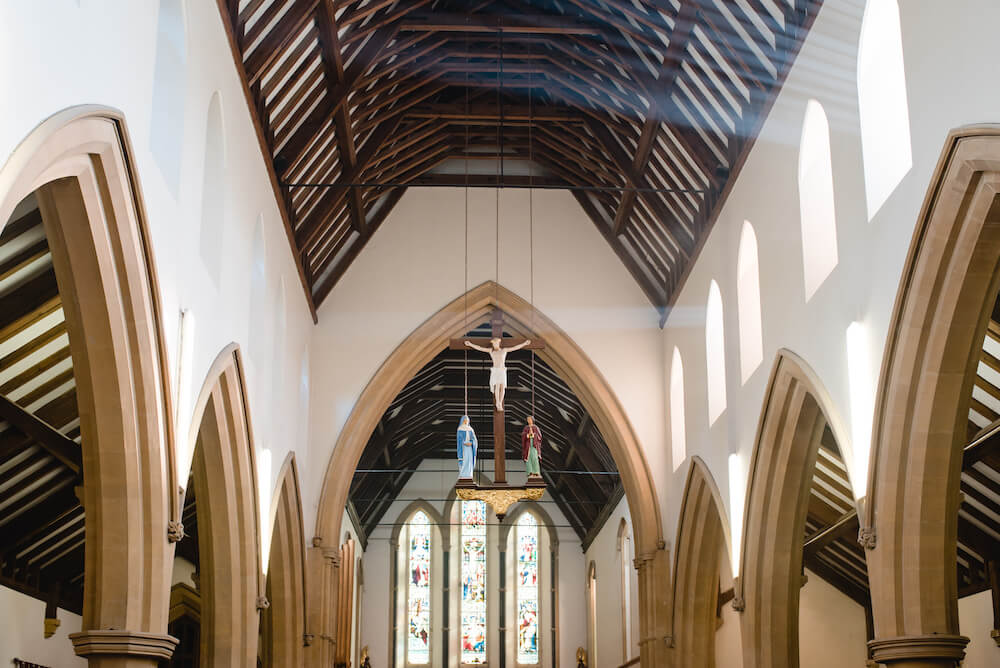
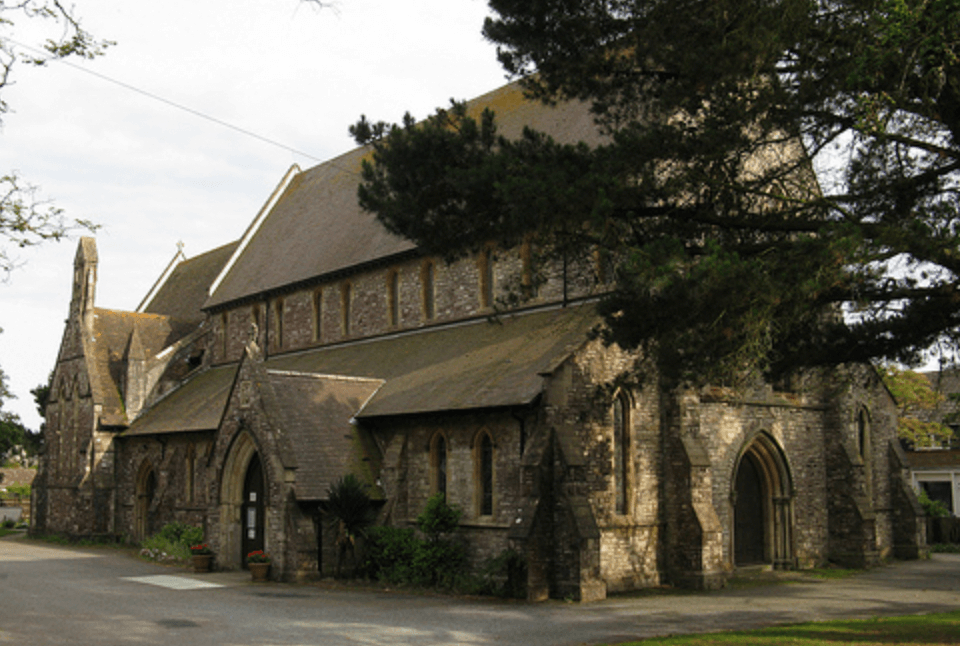
As a conventional district within the Parish of St James, Pokesdown, Dr Compton built his temporary church on the gorse covered cliffs which served as a schoolroom on weekdays. The Rev. T. Anderson, Vicar of St James, appointed the Rev. E. H. Fellowes as the first Priest-in-Charge and the first service in the temporary church took place on 1st July 1876, when the alms were collected by Dr Compton’s gardener, Mr John Barnes who later became the verger of the permanent church and served it with distinction for 51 years. It is important to point out that Mass Vestments were used at St Katharine’s from the very beginning although at first only made from plain white linen.
Communions for the first year totalled 347, an average of 7 a week with collections totalling £45.1.9. Services on that first day, 1st July 1876 were Holy Communion at 8am, Matins and Sermon 11am, Litany and Sermon 3pm, finishing with Evensong, without a Sermon at 7pm. A harmonium was used to accompany the hymns.
The Rev. H. Saunders replaced the Rev. Fellowes as Priest-in-Charge in 1880 the same year as Mr Theodore Cornish formed his ‘Pembroke Lodge’ School for boys. Communions this year totalled 787 with collections amounting to £91.5.8.
On 7th June 1881 the foundations of the present church were laid by Rev. W.H. Lucas, Vicar of Sopley and Rural Dean of Christchurch. Dr Compton gave the site for which he had paid £70 some years previously. His brother-in-law, Mr Alfred Birt of East Dulwich, was appointed architect and he produced a design which is ‘Early English’ in style.
In consultation with Rev. Alexander Morden Bennet, Vicar of St Peter’s Bournemouth and pioneer of several local churches, Dr Compton decided on St Katharine’s as a suitable title for the new church, lying as it does between a view of St Katharine’s Point in the Isle of Wight to the south-east and the hill of St Catherines to the north-east. Thomas Chalk became the Priest-in-Charge of the temporary church in 1881 when Communions reached 920 and collections totalled £193.
Tuesday 30th May 1882 was the next landmark in the history of the church, when Dr Harold Browne, Bishop of Winchester, dedicated the first (western) part of the church. Communions this year exceeded 1000 for the first time.
St Katharine’s was consecrated on the Festival of its Patron Saint, November 24th 1886, by Dr Harold Browne, Bishop of Winchester, who accepted the Deeds of Conveyance from Dr Compton, and laid them on the Altar.
St Nicholas, Southbourne-On-Sea
The building of St Nicholas Church was commenced in 1958 when Bournemouth Corporation made available a site on The Broadway at the approach to Hengistbury Head. The first section was completed in 1961. The ceremony to lay the Foundation Stone of St Nicholas Church took place on 8th April 1961.
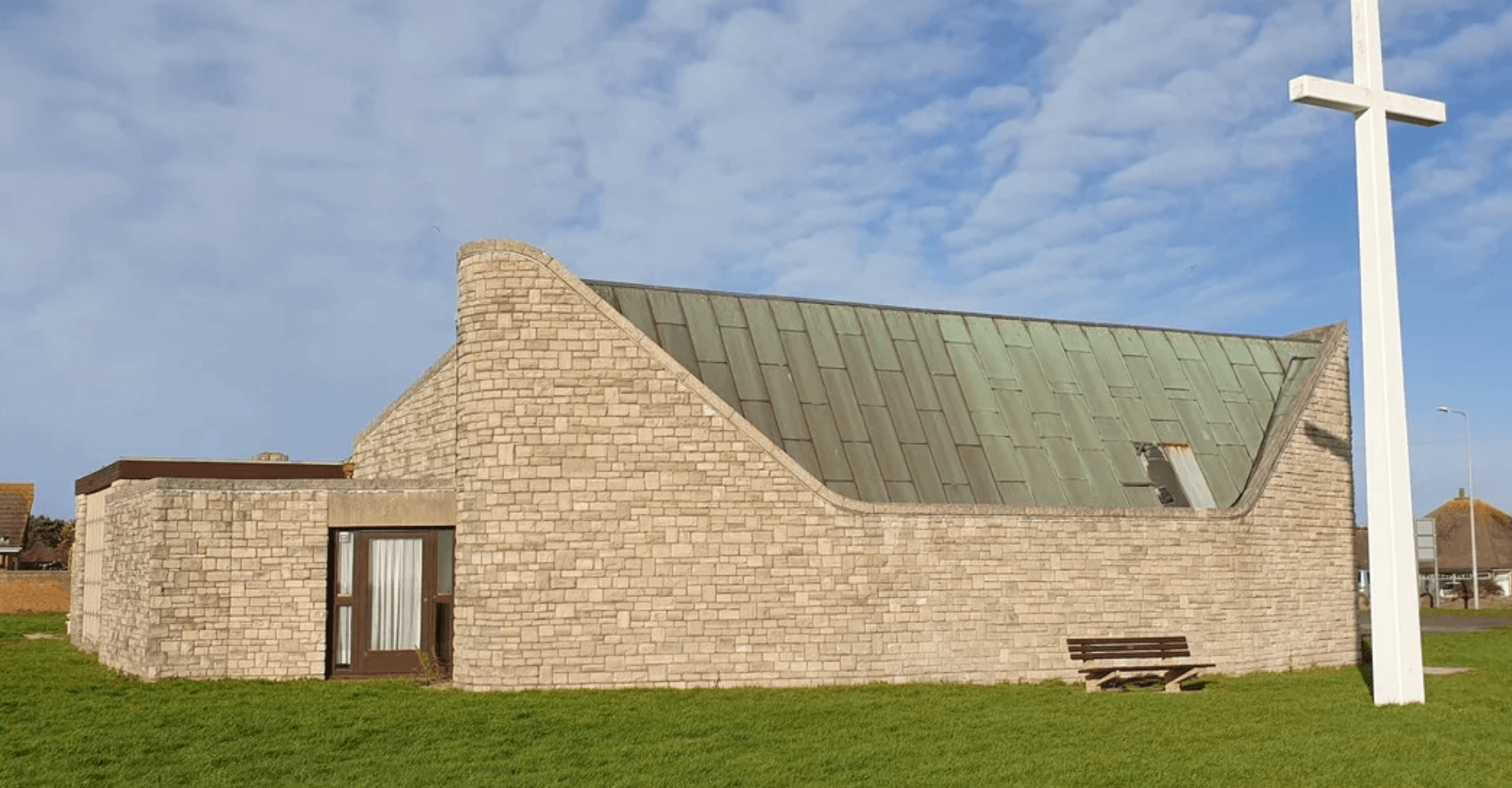
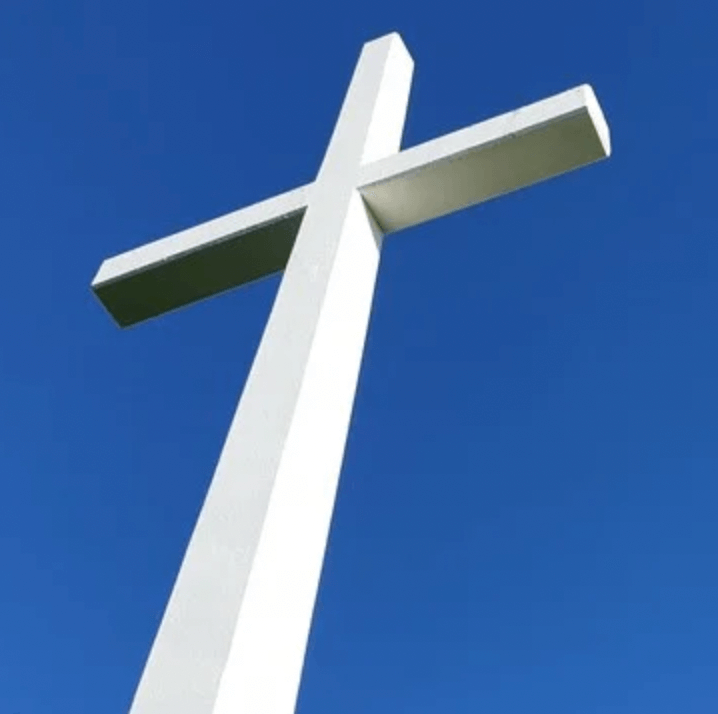
St Nicholas is the daughter church of St Katharine’s and at that time was the first Anglican church to be built in Bournemouth for seven years.
On the 9th December 1961 the Bishop of Southampton, the Rt Rev. K. N. Lamplugh, conducted the Service of Dedication of the ’Fellowship Hall’, which acted as a church and meeting place.
Women members of St Katharine’s made all the vestments and linen. The beautiful carvings on the six-sided font are the work of a local schoolmaster Mr J. Derbyshire. Another schoolmaster supplied a pair of candlesticks for the altar. The Sunday School, which formerly met at Wick Barn, transferred to St Nicholas’.
Work continued and on 25th March 1971 the completed church was dedicated by the Bishop of Winchester, the Rt Rev. Falkner Allison.
On the 7th March 1977 the 33ft high Cross was set up outside the East end of the church. The Cross is set in a concrete base weighing 19 tons and can withstand wind speeds up to 100 mph. There is a smaller cross on the other side of the church, which was intended to be temporary when the original small hall was built.
The key note of the design of the church is simplicity. Solidly built externally of Purbeck stone, the light from all windows is focused on the East wall throwing a warm glow inwards into the church. In 2001 there were great celebrations to mark the fortieth anniversary of the laying of the foundation stone. Father Raymond Jones, formerly both Assistant Curate and Vicar of the Parish, was the guest of honour.
Diocese of Winchester
At the heart of our life here is the desire to be always Living the Mission of Jesus. We are engaged in a strategic process to deliver a mission‐shaped Diocese, in which parochial, pastoral and new forms of pioneering and radical ministry all flourish. Infused with God’s missionary Spirit we want three character traits to be clearly visible in how we live:
- Passionate personal spirituality
- Pioneering faith communities
- Prophetic global citizens
The Diocese of Winchester is an exciting place to be at the moment. We wait with eager anticipation to see how this process will unfold.
We pray that, if God is calling you to join using his mission in this part of the world, he will make his will abundantly clear to you.
“As the Father sent me so I send you . . . Receive the Spirit” (John 20:21)
The Winchester diocese website is: https://www.winchester.anglican.org/
The Right Reverend Dr Tim Dakin, the Bishop of Winchester is our Diocesan Bishop supported by The Right Reverend Debbie Sellin, the Suffragan Bishop of Southampton and The Right Reverend David Williams, the Suffragan Bishop of Basingstoke.
On 16 July 2021, Bishop Tim announced that he would be retiring as Bishop of Winchester from February 2022. In the meantime, he has passed his day-to-day responsibilities to the Bishop of Southampton, the Rt Revd Debbie Sellin. You can contact Bishop Debbie through the Senior Staff Support Team.
